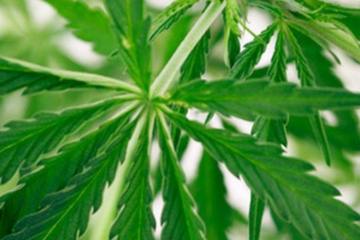Recent research from the University of Montreal has unveiled concerning evidence that cannabis use during adolescence can lead to significant changes in brain structure. The study, led by Graciela Pineyro and Tomas Paus, highlights the potential risks associated with THC, the active compound in cannabis, particularly during critical periods of brain development.
Impact of THC on Brain Development
The findings indicate that THC may contribute to the thinning of the cerebral cortex in adolescents. This thinning is linked to the shrinkage of dendritic arborization, which is essential for neuronal communication.
- Key Findings:
- THC causes atrophy in specific regions of the cerebral cortex.
- Dendritic arborization acts as a network for neuron communication.
- Thinning of the cortex can hinder learning and adaptability.
Paus likens the brain to a computer, where neurons serve as the central processor. A reduction in dendritic input can impair the brain’s ability to learn, interact, and adapt to new experiences. This vulnerability is particularly concerning during adolescence, a time when the brain is still maturing and developing critical cognitive functions.

Methodology: A Multi-Level Approach
The study employed a multi-faceted approach to investigate the effects of cannabis on brain structure. Initially, researchers analyzed MRI scans of adolescents, revealing that those who used cannabis before the age of 16 exhibited a thinner cerebral cortex. However, MRI alone could not establish causality.
- Research Techniques:
- MRI scans to assess brain structure in adolescents.
- Mouse models to study the effects of THC on gene expression.
- Combination of imaging and molecular biology techniques.
The introduction of a mouse model allowed researchers to observe how THC alters gene expression related to synapse and dendrite structure. Pineyro noted that this model demonstrated THC’s impact on genes that affect neuronal architecture, leading to the observed atrophy.
Correlation Between Mouse Models and Human Subjects
Interestingly, the genes affected by THC in the mouse model were also identified in human adolescents who had used cannabis. This correlation strengthens the study’s conclusions about the impact of THC on brain structure.
- Significant Observations:
- Genes targeted by THC in mice were linked to cortical thinning in adolescents.
- The study provides a clearer understanding of THC’s effects on brain cells.
By integrating findings from both animal models and human subjects, the researchers were able to draw more definitive conclusions about the relationship between cannabis use and brain development. This comprehensive approach enhances the validity of the results and underscores the importance of understanding the implications of cannabis use among youth.
Implications for Public Health
With cannabis use increasing among North American youth, particularly as commercial products become more potent, understanding the effects of THC on brain maturation is crucial. The study emphasizes the need for effective public health measures to address the potential risks associated with adolescent cannabis use.
- Public Health Considerations:
- Increased awareness of cannabis’s impact on brain development.
- Development of educational programs targeting youth.
- Policy implications for cannabis regulation and access.
This collaborative research effort represents a significant step toward understanding the complexities of cannabis use and its effects on adolescent brain development. As the conversation around cannabis continues to evolve, studies like this are vital for informing public health strategies and ensuring the well-being of future generations.
Category: News
Meta Description: A study reveals that cannabis use in adolescents can lead to thinning of the cerebral cortex, highlighting risks associated with THC during brain development.
URL Slug: cannabis-use-adolescents-brain-structure
Image: cannabis-use-adolescents-brain-research



